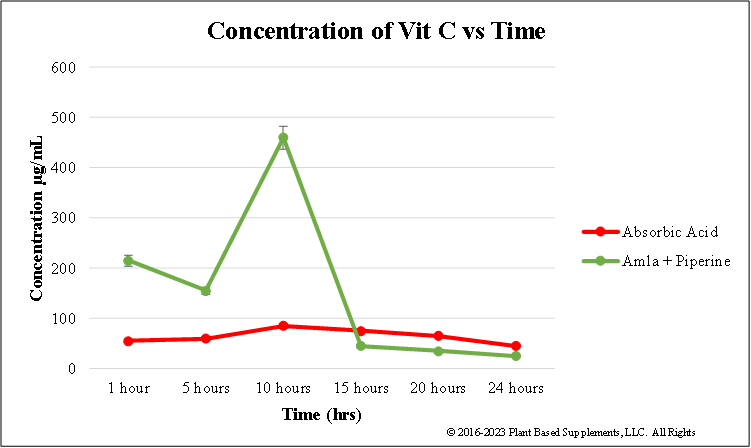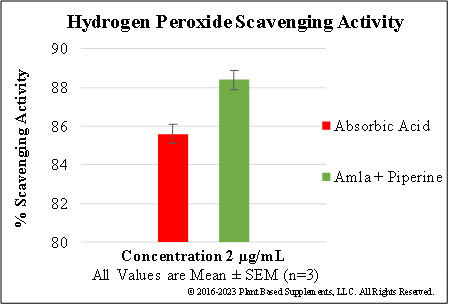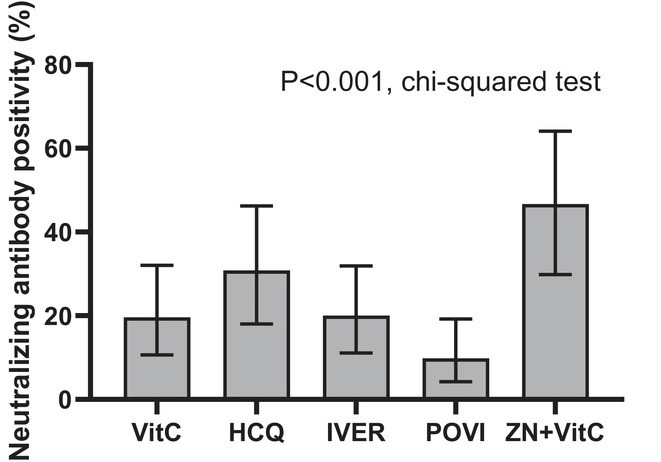Vegan Vitamin C - USDA Organic AMLApureSuperC™
The Science behind Vegan Vitamin C - USDA Organic AMLApureSuperC™
The Science behind AMLApureSuperC™
Dozens of clinical trials around the globe, both blinded and unblinded, peer-reviewed and non-peer-reviewed, invitro and vitro have all studied the benefits of AMLA (also known as Amalika or Indian Gooseberry) for serious and non-serious ailments.
The results below are based on an independent study performed by KLE University’s College of Pharmacy, which examined the antioxidant activity and the bioavailability profile of an identical formulation to AMLApureSuperC™ as compared to Ascorbic Acid (Synthetic Vitamin C), the comparator as per both ORAC Assay & High-performance liquid chromatography, HPLC
AMLA was found to have a 25% higher Oxygen Radical Absorbance Capacity (ORAC) value when compared to 100% pure Ascorbic Acid (synthetic Vitamin C). Thus clearly establishing that AMLA is an effective scavenger of free radicals (an antioxidant)
The same study further revealed that Amla absorbed 400% faster into the bloodstream when compared to traditional, synthetic Vitamin C with blood levels peaking a 500% greater concentration with Amla as compared to synthetic Vitamin C for a sustained 10 hours post single dose administration.
Additionally, the data suggests surplus Vitamin C (> 400 uG/ML) was excreted for approximately two hours resulting in a large amount of AMLA avoiding the kidneys and thereby being absorbed from the bloodstream and into the body’s critical organ pathways.
AMLA was found to possess a profound and sustained absorption profile in conjunction with a verifiably, significant antioxidant capacity.
It is possible that AMLA’s rich and diverse range of bioactive compounds and phytochemicals are the unique and naturally occurring attributes which form a central component of AMLA’s high-revving antioxidant activity.
AMLA’s primary analytes are Food Grade, Vitamin C (ascorbic acid) AND several bioactive phytochemicals, of which the majority are polyphenols (ellagic acid, chebulinic acid, gallic acid, chebulagic acid, apeigenin, quercetin, corilagin, & leutolin
AMLA’s secondary metabolites belong to phenolic acids, flavonoids, tannins, phenolics and derivatives compounds. It is possible that these full-spectrum compounds are responsible for creating an important in-vivo effect that is typically not seen with other bioenhancers or plant extracts combinations.
This effect is activation of the endogenous antioxidant system, which through critical pathways, facilitates scientifically verifiable responses to a myriad of common ailments as well as common diseases which plague mankind.



Combining Vitamin C with Zinc has been found to “significantly raise spike and neutralization antibodies (Anti-SARS-CoV-2 immunoglobulin G (IgG)) by 2x as compared to Ivermectin” which was one of the therapies tested.
According to an open label, randomized, clinical trial conducted on February 2022. A total of 422 men were enrolled, findings from this study highlight suboptimal production of neutralizing antibodies in more than 50% of individuals following an asymptomatic infection. Compared with other interventions, those who received zinc + vitamin C were found to subsequently mount a greater antibody response. https://onlinelibrary.wiley.com/doi/10.1002/ctm2.731
In Summary
Based on the known pharmacokinetic profile of AMLA from KLE school of Pharmacie’s In Vitro PK studies COMBINED with Dr. Seet’s Open Label study funded by Johnson & Johnson, GSK, Roche, Products containing Absorbic Acid; such as AMLApureSuperC may support the Immune System with Vitamin C & Zinc’s 2-phased attack against Viral Entry.
It is our mission at AMLApureSuperC™ to ensure that plant-based, Vitamin C is affordable for Everyone.
These statements have not been evaluated by the Food and Drug Administration. These products are not intended to diagnose, treat, cure, or prevent any disease.

